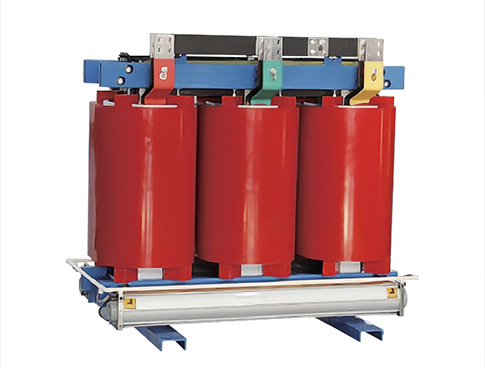Distribution transformer common fault solution

 by changan electric
by changan electric1. Three-phase load imbalance or seasonal overload
The three-phase load imbalance of distribution transformers exists in a large number from the survey results, especially in rural areas, where most of the electric load is single-phase load and the load changes a lot, therefore, there are many distribution transformers with unbalanced three-phase load, so that the three phases cannot run symmetrically and produce zero sequence current. This makes the transformer loss increase on the one hand, and reduces the effective capacity of the transformer on the other hand. These two conditions will lead to transformer overheating, insulation oil aging, so that the winding insulation level is reduced, and will eventually lead to transformer damage. The following measures can be taken.
① Investigate the load of the distribution transformer, including the load of 24 hours a day and the load of 4 seasons a year, find out the general situation of the load, and try to adjust the three-phase load to make it close to symmetrical operation;
② Adjust the peak and valley time of electricity consumption to reduce overload; meanwhile, increase the capacity of the transformer in time to avoid long-term overload operation of the transformer.
2. poor grounding
The lightning protection of distribution transformers subjected to lightning strikes are generally done, but there are still two problems:
① poor grounding of lightning arrester;
② only pay attention to the high-voltage side of the installation of lightning arrester, while ignoring the low-voltage side also need to install a lightning arrester (especially in the area of multiple lightning). If the arrester is poorly grounded, over-voltage occurs, the arrester can not be good discharge current, it will make the transformer insulation damage; if the low-voltage side is not equipped with lightning arrester, when the high-voltage side of the arrester to the earth to discharge a large lightning current, the grounding position on the voltage drop, this voltage in the transformer shell while also acting on the low-voltage side of the winding neutral, and the low-voltage side of the winding through the low-voltage line wave impedance grounding. The following measures can be taken .
① check with the arrester related to poor grounding, according to the requirements of the re-connection. Note first to the arrester grounding line directly with the transformer shell, low-voltage side of the neutral point connected together, and then the common grounding device. Its grounding resistance does not also exceed 4 Ω;
② for multi-mine area, the low-voltage side to set up an additional group of low-voltage lightning arrester.
3. oil seepage leakage
Distribution transformers in the transformer oil leakage phenomenon is also more. Due to the leakage, the transformer oil volume is reduced, the oil level is lowered, causing the infiltration of air and water vapor, accelerating the oxidation of the oil and its deterioration, making the oil viscosity become larger, convection speed is reduced, affecting the heat dissipation of the transformer, making the temperature rise higher, which further accelerates the deterioration of the oil. At the same time, the degradation of the oil acidity increased, resulting in the insulation resistance of the winding reduced, and even play a destructive role on the insulation, in the long run, will certainly lead to transformer damage. The following measures can be taken:
① check the place of oil leakage, and make good treatment;
② check whether the transformer oil deterioration and degradation, a simple analysis of the oil. If the transformer oil from the initial light yellow gradually become orange, brown, and oil viscosity is large, that the transformer oil has deteriorated, must be purified or replaced;
③ when the transformer oil is not deteriorated, check whether the oil level is too low. If it is too low, add oil to the scale marked in the transformer oil storage cabinet;
④ check the insulation resistance of the winding.




